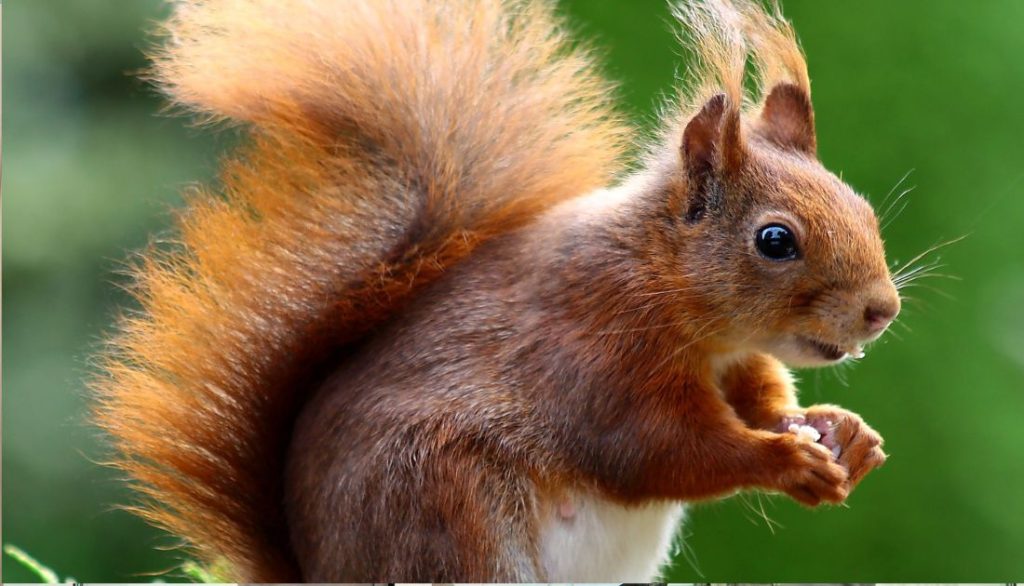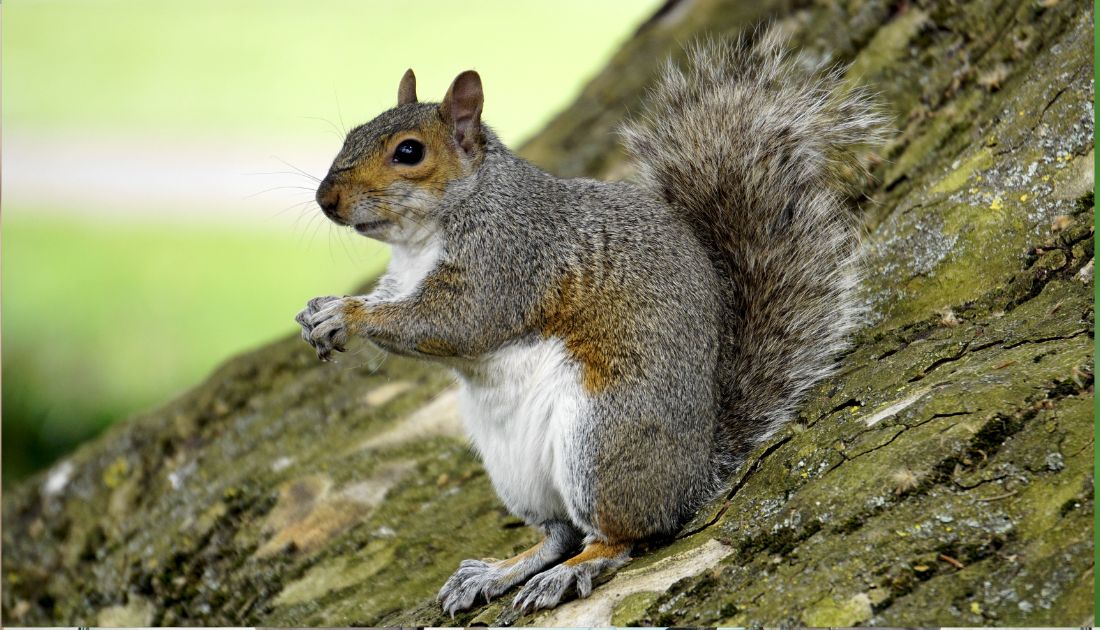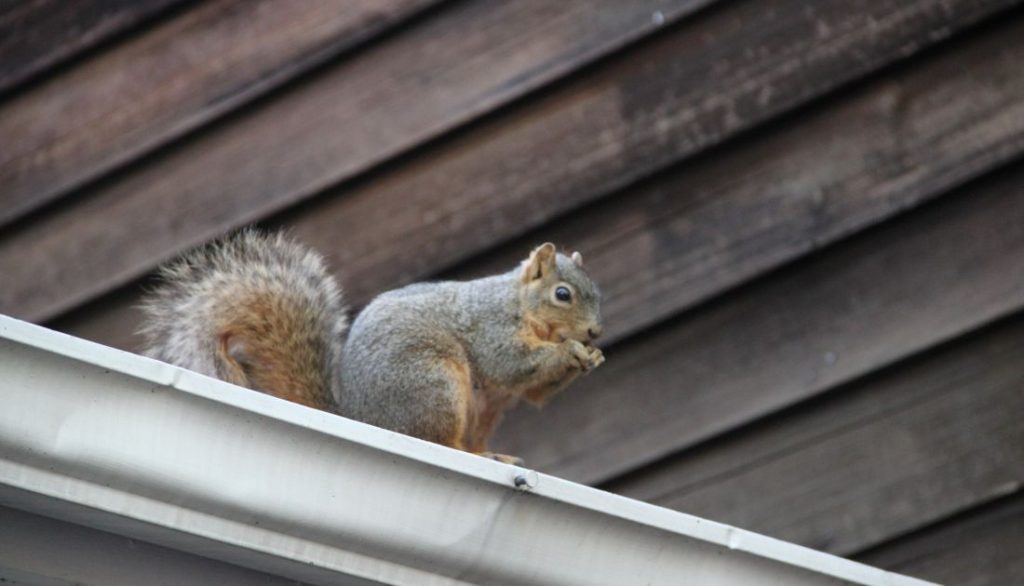Table of Contents
Some people view squirrels as cute and harmless, but they can quickly become a nuisance when they invade your roof or attic space. From gnawing on woodwork to creating noise disturbances and leaving behind unsanitary droppings, a squirrel infestation in your home can cause damage and pose health risks.
Squirrels are agile creatures that can easily access these spaces through small openings. Once inside, they can chew on wires, insulation, and woodwork, leading to potential safety hazards and costly repairs. Identifying these signs early on is crucial in addressing the infestation promptly and effectively before it escalates further.
Identifying the Signs of a Squirrel Infestation
- Chewed Wires and Wood: Look for gnawed electrical wires or wood beams in your attic, as squirrels have strong teeth that can cause damage.
- Scratching Sounds: If you hear consistent scratching noises from your roof or attic, it could indicate squirrels nesting or moving around.
- Droppings: Look for small pellet-like droppings in your attic, as squirrel feces can indicate their presence.
- Unusual Noises: Scratching or scurrying sounds coming from the roof or attic.
- Visible Damage: Chewed wires, woodwork, or insulation.
- Sightings: Spotting squirrels entering or exiting your roofline.
- Droppings: Finding feces resembling pellets in the attic space.
Be vigilant for these signs to catch a squirrel infestation early and take prompt action to prevent further damage to your home.
Understanding the Risks and Dangers
Squirrels can chew through the electrical wiring in your attic, which may lead to a fire hazard. These rodents also carry diseases such as rabies, leptospirosis, and salmonellosis that can be transmitted to humans. Squirrel infestations can cause structural damage to your roof, insulation, and other areas of your home.
Addressing a squirrel infestation promptly is crucial to preventing these risks from escalating further. Ignoring the problem can result in costly repairs and potential health hazards for you and your family.
Prevention Measures to Keep Squirrels Away
Seal Off Entry Points: Conduct a thorough inspection of your roof and attic to identify any gaps, cracks, or openings squirrels can use to enter. Seal off these entry points with durable materials like metal flashing or wire mesh to prevent further access.
Trim Overhanging Branches: Squirrels are skilled climbers who can easily access your roof by overhanging tree branches. Trim back any branches within jumping distance of your roof to limit their ability to reach your home.
Install Squirrel Deterrents: Consider installing motion-activated lights or sprinkler systems around your property to deter squirrels from venturing too close. These deterrents can startle the pests and encourage them to seek shelter elsewhere.

DIY Removal Methods for Squirrel Infestations
Seal Entry Points: Inspect your roof and attic for any openings or cracks that squirrels could be used to enter. Seal these entry points with durable materials like steel mesh or hardware cloth to prevent further access.
Use Repellents: To deter squirrels from returning, consider using natural squirrel repellents like peppermint oil, ammonia-soaked rags, or predator urine around the infested area.
Install Traps: Live traps can safely capture squirrels before returning them to the wild. Place bait such as peanut butter inside the trap to attract the squirrels effectively.
Hiring Professional Exterminators: Pros and Cons
Pros:
- Expertise: Professional exterminators have the experience and knowledge to remove squirrels from your attic effectively.
- Safety: They have the proper equipment and training to handle potentially dangerous situations, such as dealing with aggressive squirrels or accessing hard-to-reach areas.
- Prevention: Professionals can identify potential entry points for squirrels and seal them off, preventing future infestations.
Cons:
- Cost: Hiring professional exterminators can be expensive compared to DIY methods.
- Time: Scheduling an appointment with a professional extermination service may take time, which could delay getting rid of the squirrel infestation on your roof(Attic).
- Reliance: Some individuals prefer handling pest control themselves rather than relying on external services for their home maintenance needs.
Repairing Damage Caused by Squirrels
Assess the Damage: Begin by assessing the extent of damage caused by squirrels in your attic or roof space. Look for chewed wires, torn insulation, and any nesting materials they may have left behind.
Repair Electrical Wiring: If squirrels have damaged electrical wiring, it is essential to repair or replace it to prevent fire hazards. Before restoring power, hire a professional electrician to ensure that all wiring is safe and up to code.
Replace Insulation: Squirrels often tear up insulation for their nests, leading to poor energy efficiency in your home. Replace any damaged insulation with new material to maintain proper temperature control and reduce heating costs.
Dealing with Squirrel Droppings and Odors
Cleaning up Squirrel Droppings
- Safety First: Before cleaning squirrel droppings, wear gloves and a mask to protect yourself from potential diseases carried by the feces.
- Use Disinfectant: Thoroughly clean the area with a disinfectant solution to kill any bacteria or parasites in the droppings.
- Dispose Properly: When disposing of squirrel droppings, seal them in a plastic bag and throw them away in an outdoor trash receptacle.
Eliminating Squirrel Odors
- Ventilate: Open windows and use fans to ventilate the space where squirrels have been nesting to help eliminate odors.
- Deodorize: Use products like baking soda, vinegar, or commercial odor neutralizers to combat remaining smells left behind by squirrels.
Tips for Keeping Squirrels Out in the Future
- Seal Entry Points: Inspect your roof and attic for any openings where squirrels can enter. Use wire mesh or steel wool to seal off these entry points effectively.
- Trim Trees and Branches: Keep trees near your property trimmed to prevent squirrels from gaining easy access to your roof. Trim branches that are within six feet of your home.
- Secure Trash Bins: Ensure all trash bins are securely closed to avoid attracting squirrels looking for food sources near your home.
Following these tips can reduce the likelihood of future squirrel in roof/attic area. Preventive measures are key to keeping these critters at bay and protecting your home from damage.

